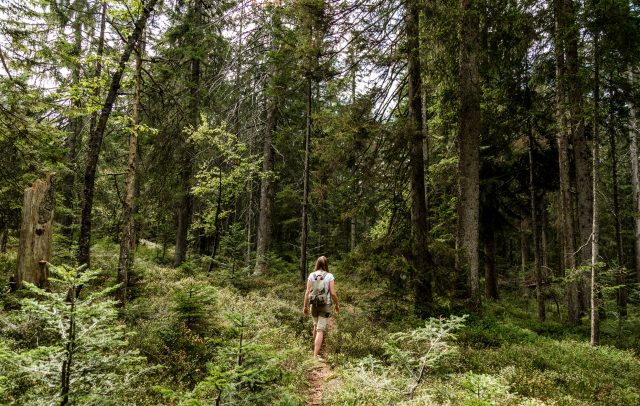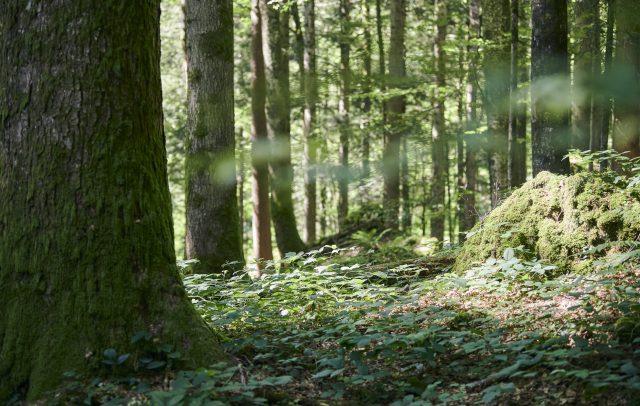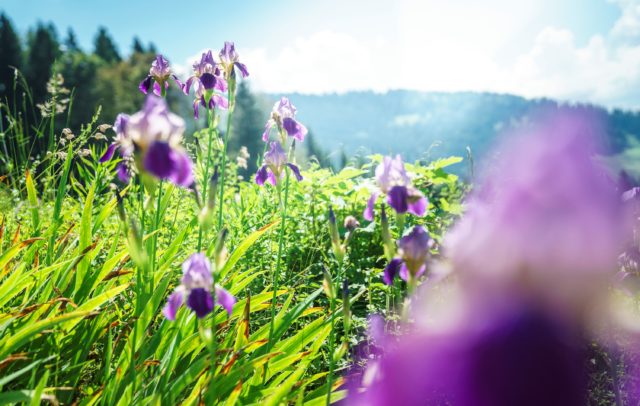
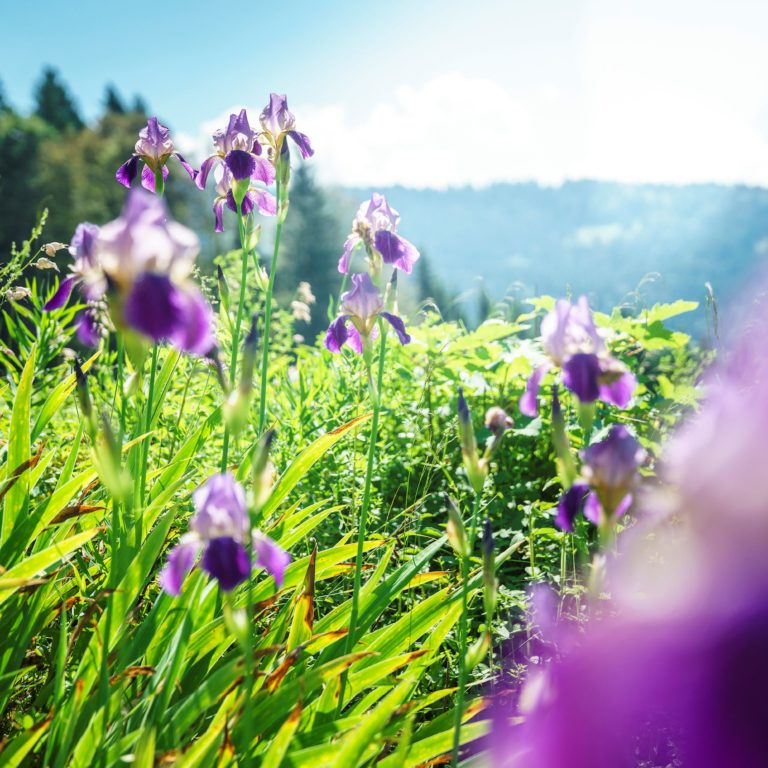
C Meadow of the Streichbrunnen Alpine pasture (c) Dietmar Denger - Vorarlberg Tourismus
Nature tips Vorarlberg
Meadow habitat
Vorarlberg is defined by a diverse landscape featuring numerous meadows that serve essential ecological functions and provide recreational spaces for people.
The abundance of meadows and pastures in the region is largely the result of human activity. Without this influence, forests would dominate much of the area, with meadows occurring only above the tree line or in places where forests cannot grow, such as moors or dynamic floodplains. The history of settlement is closely linked to the development of grasslands. Meadows have been cultivated for centuries, primarily to store hay for livestock during the winter, leading to the creation of the first hay meadows. Evidence of this development dates back to the early Middle Ages.
However, it is not just human activity that has shaped the landscape. The last ice ages also played a crucial role. Glacial deposits and moraine remnants now form the soil in the region’s slopes and valleys, significantly influencing the present-day landscape. The slopes, in particular, are highly fertile, contributing to the rich diversity of species and meadows in Vorarlberg.
These varied meadows serve as habitats not only for plants but also for numerous animal species. Depending on how they are managed and the specific site conditions, different plant communities thrive in these meadows, providing essential conditions for life for various animals, especially insects. Pollinators such as honey bees, solitary bees, bumblebees, and butterflies rely on herbs and flowers as vital food sources.
Thus, biodiversity thrives in vibrant meadows!
In areas where little to no fertiliser is used, meaning nutrients are limited, flowering plants can flourish as they face less competition from grasses. Meadows managed extensively are typically mown only once a year, and only after the plants have flowered. This allows the plants sufficient time to produce seeds for reproduction. Such meadows boast an exceptional diversity of flowers and insects. Found at higher altitudes in Vorarlberg, these mountain meadows are among the most species-rich ecosystems in the world, surpassing even comparable areas of tropical rainforest in species count. This richness isn’t limited to plants; the more flowers there are, the more meadow inhabitants thrive.
Nature tips in the meadow habitat
-
01 Spring crocus - Well rooted into the new growing season
Plants of the crocus genus are particularly bold. The Spring Crocuses (Crocus vernus) native to Vorarlberg are remarkably hardy and are among the first to bloom each year. Closely related to the renowned saffron plant, they form large underground tubers that serve as survival organs. These tubers store energy from the previous year’s photosynthesis, enabling the crocuses to offer their vibrant blossoms to passing insects early in the spring. With their white to purple petals, spring crocuses create an inviting sight for hungry bumblebees, which can fly even at temperatures as low as 6°C.
Tips for experiencing
If you want to see the 5-15 cm Spring Crocus up close, visit the sunny slopes of Vorarlberg after the first snow has melted. Locations between 1,000 and 1,400 metres above sea level are especially popular. -
02 Coltsfoot - Fast food for bees
The somewhat amusing name for Coltsfoot (Tussilago farfara) was derived from the plant’s resemblance to the foot of a foal or colt back in the 16th century. These plants are early bloomers in spring. By the end of February, yellow flower heads emerge from the ground, often with no sign of green to indicate their presence. This species is particularly important to flying insects, providing them with their first quick meal in spring when little else is available. The heart-shaped leaves appear a little later.
Tips for experiencing
If you wish to spot these yellow blossoms, it’s best to venture out early in the year along one of Vorarlberg’s many hiking trails. It’s not uncommon to find the cobwebby, hairy flower heads, which bear a resemblance to dandelions, right at the edge of the path. -
03 Common Brimstone
The Common Brimstone holds a remarkable distinction in the butterfly world: it is the only species in Central Europe that can live for up to twelve months. While other butterflies typically conclude their lifecycles in the autumn, this vibrant yellow insect begins its journey with great energy. Even the harsh winter conditions in Vorarlberg pose no barrier, as the stored glycerine within its body acts as a natural antifreeze, preventing its cells from freezing. It is only during May and June that these beautiful flying creatures seemingly disappear, as they spend this period as caterpillars on the surfaces of leaves.
Tips for experiencing
The Common Brimstone can be observed all over Vorarlberg. It lives in both humid and drier areas and climbs to almost 2,800 m above sea level, depending on the weather. -
04 Curlew
Vorarlberg is extremely important for the conservation of the Eurasian Curlew. Every year, hundreds of these wading birds undertake their migration to their wintering grounds, with the Rhine river delta on Lake Constance serving as a vital resting spot to replenish their energy reserves. As a ground-nesting species, the Eurasian Curlew is heavily impacted by agricultural intensification. This is why extensive nature conservation projects in Vorarlberg are essential; they help ensure the availability of near-natural habitats that support a diverse population of worms and snails, which are crucial food sources for the Eurasian Curlew.
Tip for experiencing
If you wish to observe this magnificent bird, it’s best to bring binoculars and visit the expansive reed beds in the Lower Vorarlberg Rhine Valley. It’s essential to stay on designated paths at all times! Alternatively, you can join a guided birdwatching tour with local nature guides in Vorarlberg. Given the significant pressures facing the Eurasian Curlew population, it’s particularly important to exercise caution near the reed beds of the Rheintal valley. Always ensure that dogs are kept on a leash. -
05 Northern Lapwing - Aerial acrobat of the Rheintal valley
If you venture into the expansive reed beds of Vorarlberg, you might be fortunate enough to hear otherworldly sounds. During the spring, when the Northern Lapwing performs its impressive mating flights, it almost seems as if a being from the future has come to visit us. Unfortunately, the future of the bird itself appears quite uncertain. Populations are steadily declining due to habitat loss and pressures from predators such as foxes. The eggs, once considered a delicacy, are now under strict protection.
Numerous projects—some carried out by volunteers—aim to maintain healthy populations in Vorarlberg. Success is most likely when conservation efforts, agriculture, and nature enthusiasts work in harmony.
Tip for experiencing
If you wish to hear the distinctive call of the Northern Lapwing and witness its remarkable flying abilities, the best way to do so is by joining a guided birdwatching tour with local nature guides in Vorarlberg or participating in an excursion organised by Birdlife-Vorarlberg. Always remember to be considerate when hiking on your own and keep dogs on a leash.



















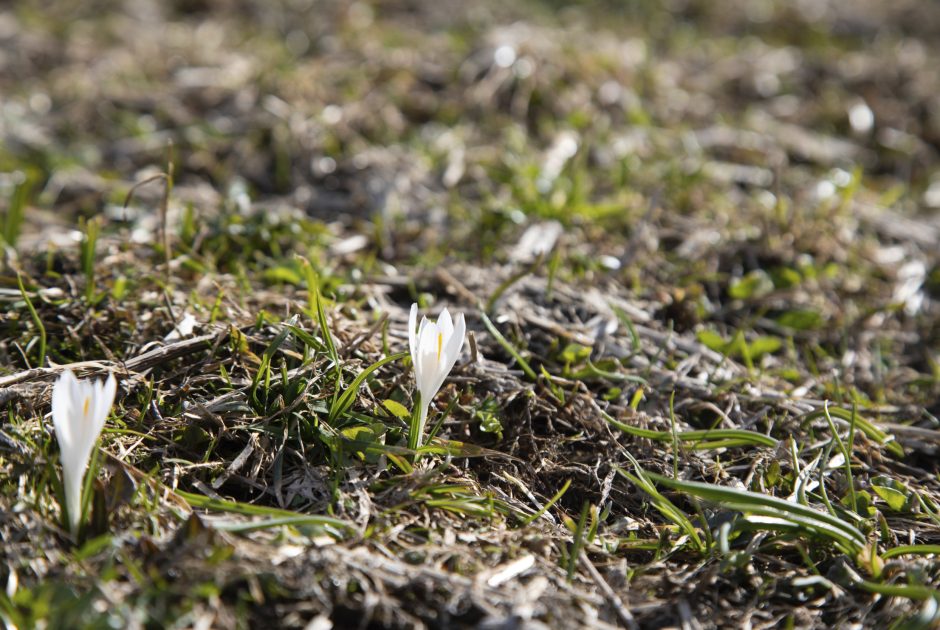
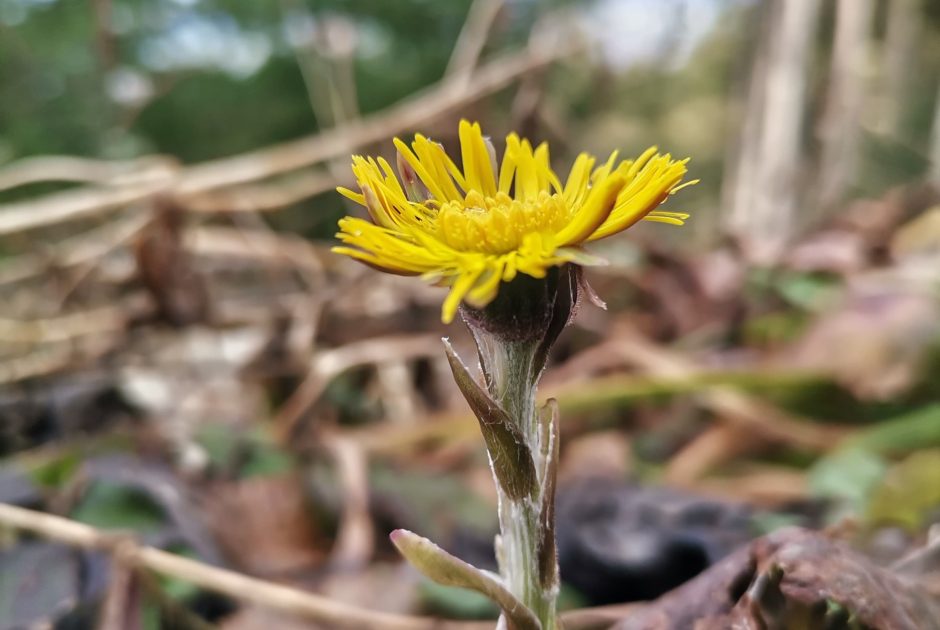
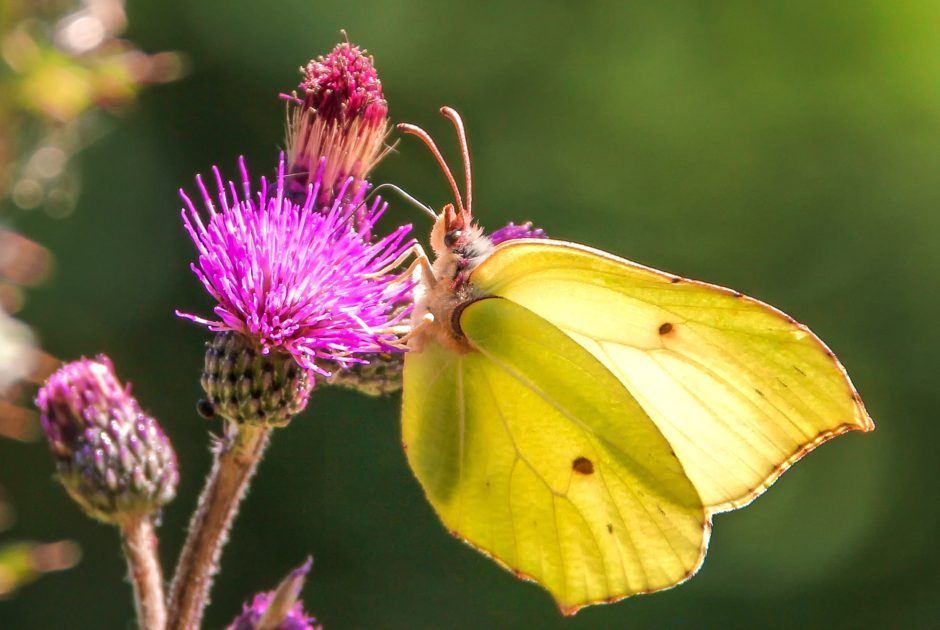
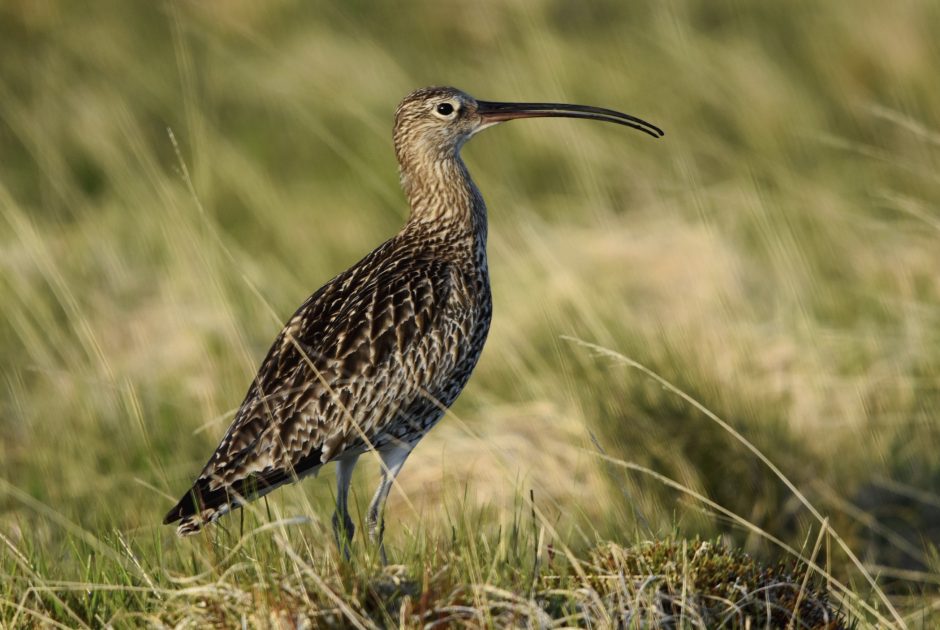
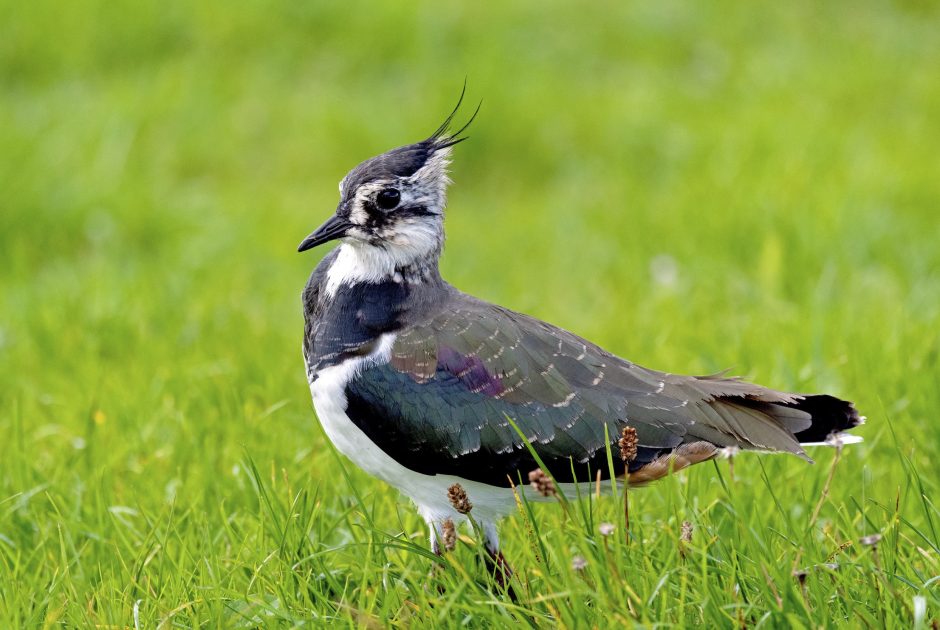







































![Hanno Thurnher Filmproduktion - By Cinedoku Vorarlberg (Own work) [CC-BY-SA-3.0 (http://creativecommons.org/licenses/by-sa/3.0)], via Wikimedia Commons Der Alpenrhein mündet in den Bodensee](https://v-cloud.vorarlberg.travel/asset/df44686c-2efc-4a4a-8a7a-d0fb27523c43/8V6QKwrJPPDJEmI_FyzxU9eoUVu1UEFzzrFRVJGYPTA/1739528569/default/fill/1400/700/0/sm/der_alpenrhein_muendet_in_den_bodensee.jpeg)



